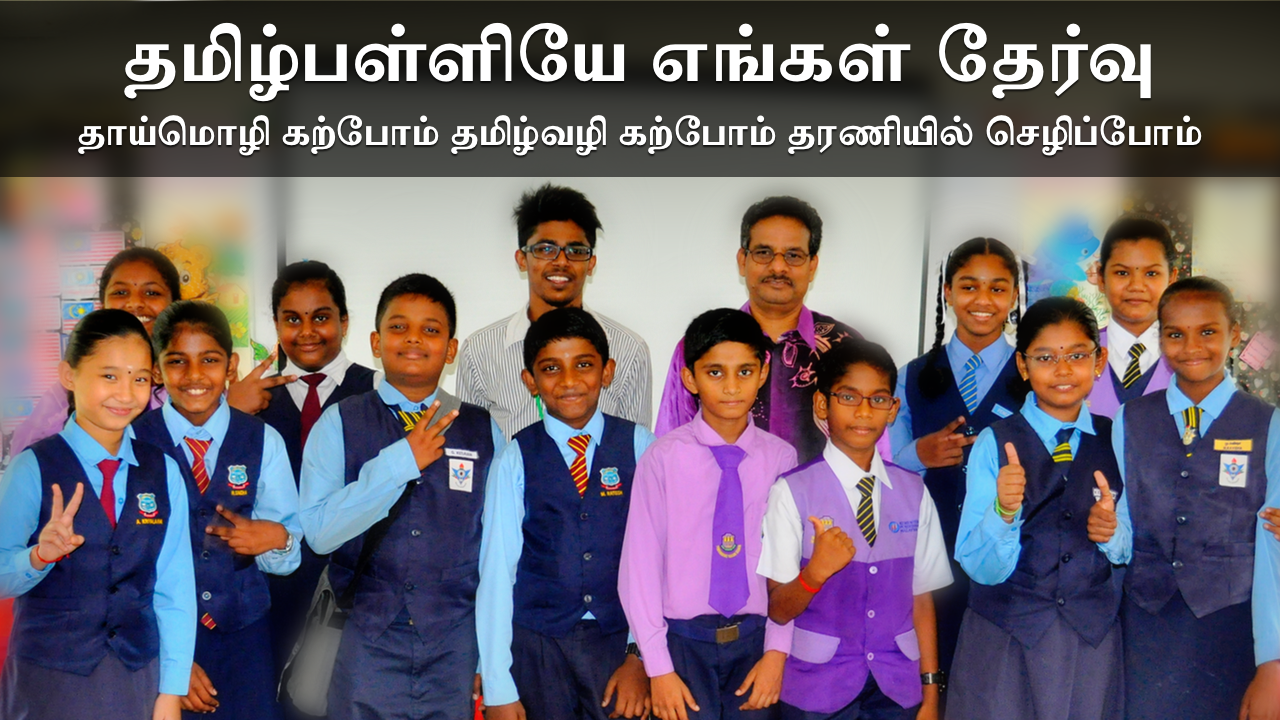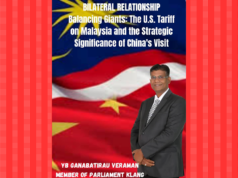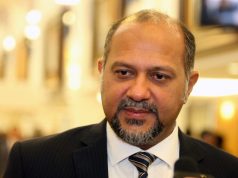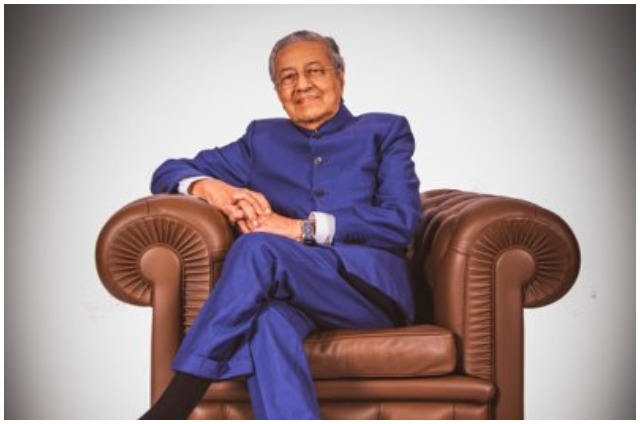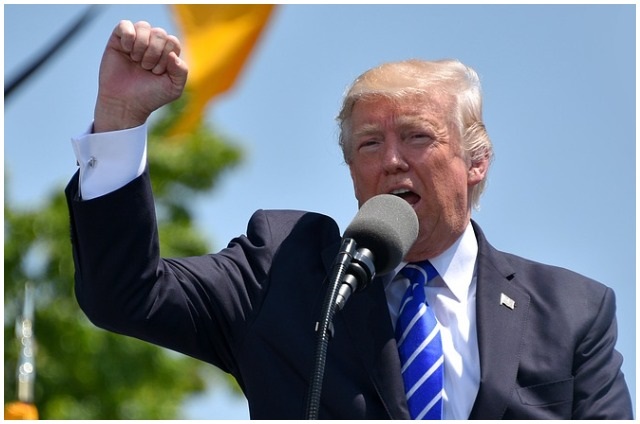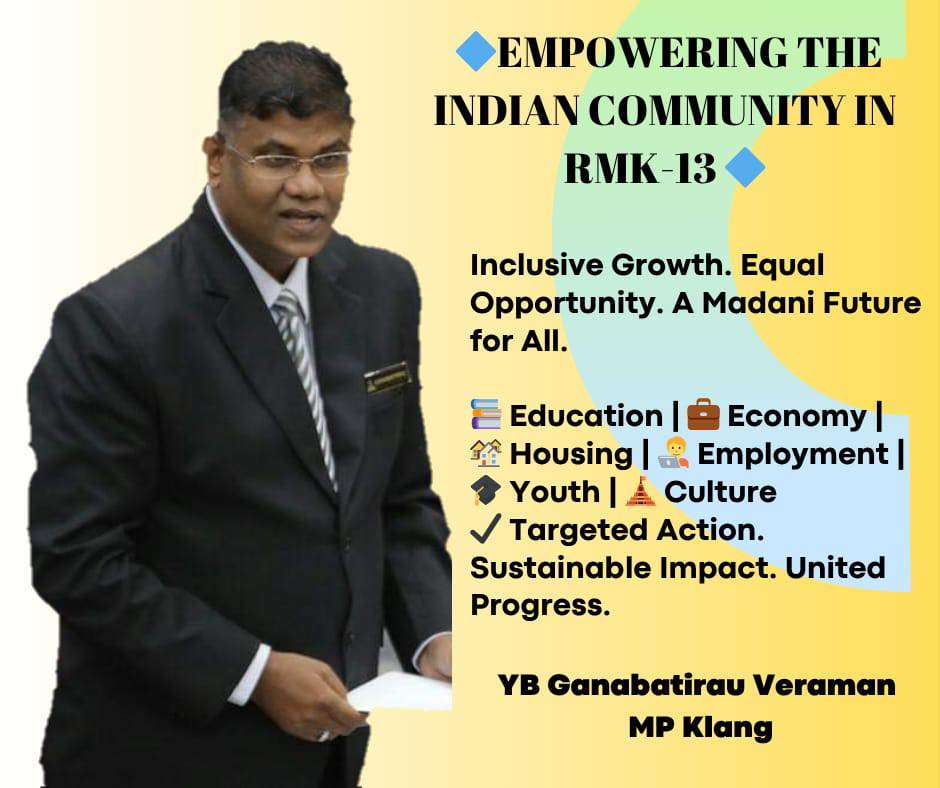

The following is the full text of Ganabatirau’s posting on his face book page:
Policy Proposal: Addressing the Needs of the Malaysian Indian Community in the 13th Malaysia Plan (RMK-13)
Title: Mainstreaming Indian Community Development in the 13th Malaysia Plan (RMK-13)
*Submitted to PMX and Minister of Economy
*Proposed by: YB Ganabatirau Veraman, MP for Klang
Date: 2/7/2025
1. Executive Summary
This proposal outlines a series of evidence-based, actionable strategies to address persistent socio-economic disparities faced by the Indian community in Malaysia under the upcoming 13th Malaysia Plan (RMK-13). The Indian community, while small in number, has made significant contributions to nation-building yet continues to face structural barriers in education, economy, housing, employment, youth development, and cultural preservation. This policy aims to ensure that development plans are inclusive, measurable, and aligned with the Madani vision of a fair and just society.
2. Background and Rationale
The Indian community in Malaysia, comprising approximately 7% of the population, is not a homogenous group. A significant segment resides in the B40 category, often concentrated in urban poor areas, with limited access to quality education, employment, housing, and social mobility. Previously Malaysia Plans introduced short-term intervention programs (e.g., SEDIC, MITRA), but issues of fragmentation, limited coordination, and lack of sustainable long-term impact remain.
There is an urgent need for a *comprehensive, integrated, and outcome-based approach* to uplift the socio-economic status of the Indian community in RMK-13, based on data, stakeholder engagement, and whole-of-government collaboration.
3. Policy Objectives
1. *Reduce income inequality* and increase the participation of Indian households in mainstream economic activities.
2. *Enhance education access and performance* for Indian students, especially from B40 backgrounds.
3. *Improve housing, social welfare, and healthcare access* for Indian urban poor.
4. *Promote entrepreneurship and employment opportunities* within strategic sectors.
5. *Strengthen youth development, cultural identity, and civic participation*.
6. *Institutionalize governance mechanisms* for policy delivery, monitoring, and accountability.
4. Strategic Pillars and Policy Measures
*Pillar 1: Education and Skills Development*
* Increase targeted scholarships (JPA, MARA, GLCs) for Indian students, especially in STEM and TVET programs.
* Upgrade all Tamil schools (SJKT) with digital tools, trained staff, and improved facilities.
* Implement after-school intervention programs in high-risk communities through PPP with NGOs.
*Pillar 2: Economic Empowerment and Entrepreneurship*
* Allocate a minimum of RM300 million in soft loans/grants to Indian entrepreneurs under TEKUN, SME Corp, and Bank Negara initiatives.
* Establish “One District, One Indian Enterprise” programs to promote rural and semi-urban business hubs.
* Facilitate GLC procurement participation for Indian-owned SMEs with simplified onboarding.
*Pillar 3: Employment and Labour Mobility*
* Introduce mandatory ethnic-disaggregated employment data tracking in civil service and GLCs.
* Offer structured internship-to-employment programs for Indian graduates in public-private partnership.
* Incentivize companies with Diversity KPIs in hiring practices and human capital development.
*Pillar 4: Housing and Social Development*
* Reserve quota within PPR and RUMAWIP projects for deserving Indian families.
* Expand social protection (Bantuan Keluarga Malaysia, MyKASIH) with targeted outreach to Indian B40 households.
* Improve public health outreach programs in urban Indian settlements (screening, mental health, addiction rehab).
*Pillar 5: Youth, Culture, and Community Engagement*
* Set up *Indian Youth Empowerment Hubs* in major cities for leadership, digital skills, and community volunteerism.
* Provide funding for Hindu temples to run educational and welfare outreach (tuition, feeding, counselling).
* Launch a National Indian Cultural Heritage Preservation Program (language, performing arts, digital archives).
*5. Implementation Mechanism*
* Establish a *Dedicated Indian Community Development Unit* within EPU or PMD with a multi-agency taskforce (MARA, MITRA, KPKT, MOE, MOHR).
* Integrate KPIs for Indian community upliftment across ministry KPIs in RMK-13.
* Involve stakeholders (e.g., MHS, NGOs, religious bodies, youth groups) in planning, feedback, and monitoring.
*6. Monitoring and Evaluation*
* Introduce *Annual Development Report Cards* specifically tracking Indian community outcomes under RMK-13.
* Use Big Data tools to monitor school dropout rates, job placement, household income improvements.
* Independent review committee to assess impact every two years and recommend course corrections.
*7. Budgetary Allocation Request*
A minimum *RM1.5 billion on yearly basis over 5 years* is proposed for targeted Indian development under RMK-13, distributed across key sectors:
* RM300M for Education & TVET
* RM400M for Economic Programs
* RM250M for Housing & Welfare
* RM150M for Youth & ɓCommunity Programs
* RM100M for Institutional Capacity and Governance
* RM300M contingency & performance-based incentives
*8. Conclusion*
RMK-13 represents a critical opportunity to correct long-standing structural imbalances and reintegrate the Indian community into Malaysia’s shared prosperity agenda. A bold, coordinated, and community-informed policy effort is necessary—not only to uplift lives but to reinforce national unity, social equity, and economic resilience in a rapidly changing global environment.
This proposal serves as a framework for transformative and inclusive development, ensuring that *no Malaysian is left behind*.
Ganabatirau Veraman
Member of Parliament for Klang



